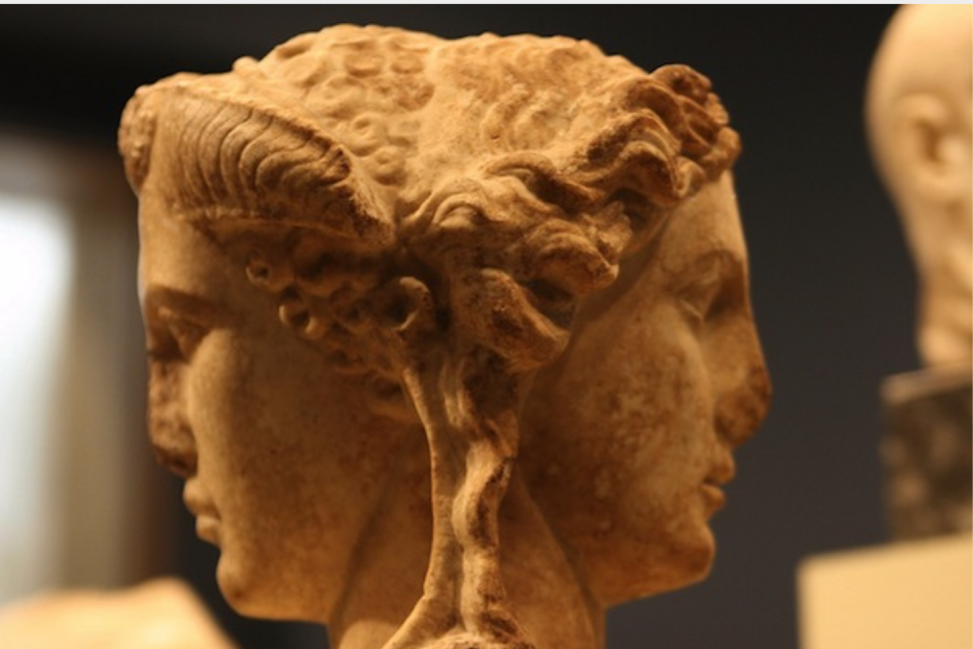Since the beginning of documented Roman history, the god, Janus, has been a major deity in ancient culture. Traditionally Janus is shown with two faces or heads that face in opposite directions. To represent the harmonized nature of their combined minds, one is usually male and the other female. He is the god of the past and future, looking backwards and forwards simultaneously. This significant trait helps him rule passageways, including doors, gates, and archways. He is widely known as the god of transitions. In the early mythology, Janus was the original creator, the god of gods. He ruled time, humankind, the cosmos, and everything in between. The two faces of Janus were symbolic of the past and future being endlessly tied together. Janus was also symbolic to wars. Roman soldiers would march under and be honoured by the symbol of Janus to prepare for war and victory. The Janus shrines and temples were only open during times of war and were ceremoniously closed during times of peace. One of the original myths of Janus was that the creator of Rome, named Romulus, need to populate his newly founded city but there were no women. In light of this, Romulus decided to kidnap women from a neighbouring tribe, called the Sabines. The Sabines attacked, which provoked Janus into causing a massive volcanic eruption. It killed the king of the Sabine tribe, and many of his warriors were left disfigured or dead. After this, the Romans and Sabines came together to create a new unified civilization and they honoured it by carving the symbol of Janus on the archways of certain buildings. They then deemed these buildings to only be opened in times of war.
